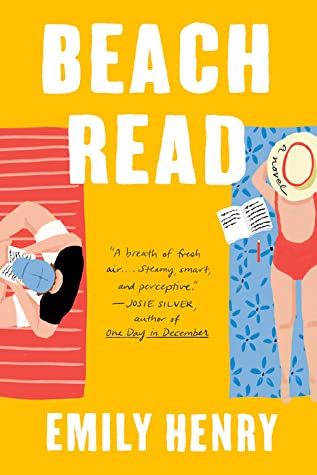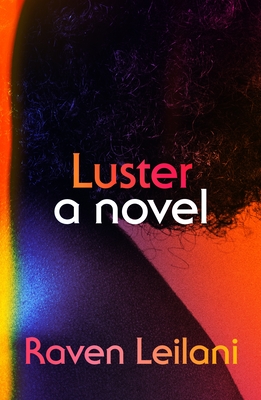 I had a discussion with a friend recently about what makes someone associate a movie with a particular season. This started because I said that Catch Me if You Can is a Christmas movie (despite having little to do with Christmas) and Mean Girls is a Halloween movie (despite having a very famous Christmas scene). Sometimes, it’s simply about the ephemeral phenomena we like to call vibes. It’s not really explainable, but you know it when you see it—or, more accurately, feel it. So what makes a beach read, a beach read? Does it even require a beach?
I had a discussion with a friend recently about what makes someone associate a movie with a particular season. This started because I said that Catch Me if You Can is a Christmas movie (despite having little to do with Christmas) and Mean Girls is a Halloween movie (despite having a very famous Christmas scene). Sometimes, it’s simply about the ephemeral phenomena we like to call vibes. It’s not really explainable, but you know it when you see it—or, more accurately, feel it. So what makes a beach read, a beach read? Does it even require a beach?
Since we’re still in summer’s sweaty thrall, it appears a lot of us have beach books on the brain; Book Riot recently posted an article titled “What Makes a Book a Beach Read?” and it got me thinking. Imagine lying on a pineapple blanket in the hot summer sun, the sound of crashing waves sprinkled with the sound of laughter, eating a popsicle and trying to read Anna Karenina. The disconnect is too great. Basically, when you’re stretched out in the sun (or the shade), you don’t want your brain to be doing too much work.
Before I go on, let me address the elephant in the room. Oftentimes, “beach reads” are synonymous with “women’s fiction”: light, fluffy, romantic, nothing too strenuous. Of course, this assumption has blatantly sexist roots, assuming that “books by women, about women, are more likely to be considered “light reading.”’ But let’s say that this flavour of “women’s fiction” actually is light reading—is that even a problem? I did just say I don’t want to use my brain. Perhaps women have just unlocked another level of enjoyment with this genre? The tension between “women’s fiction” and “literary fiction”—and that fact that those are considered two different things—is at the core of Emily Henry’s new novel aptly titled Beach Read. The plot is ripe for rom-com goodness: a struggling writer of women’s fiction moves into the beach house next door to—gasp!—her literary rival since college. Of course, the rival is an attractive, successful man. But Emily Henry uses this tropey set-up to explore what makes something a “beach read”; her main characters agree to swap genres (heavy literary fiction for romance) to overcome their respective writers block, and in doing so learn the value of each. Not just a beach-set rom-com, Beach Read—as its blunt title suggests—is a meta exploration of its genre.
 Beach Read happens to be a read literally set at a beach, but not all beach reads must be. And they’re not all fluff, either. In a 2016 study, The Guardian noted that “Literary novelists who have a strong handle on plot are often characterized as good vacation reads, because they manage to transport you elsewhere, away from the petty facts of ordinary life.” This puts to mind authors like Madeline Miller, Silvia Garcia Moreno, and Raven Leilani, whose literary books are perfect for hot weather. For mood readers, a sultry summertime setting could be the key, regardless of genre. Think of all the vacation-friendly novels set in Italy, for example: you could go women’s fiction (The Worst Kind of Want), coming of age/romance (Call Me by Your Name), classic (A Room with a View), or even thriller (The Talented Mr. Ripley). No matter the genre, the steamy Italy setting will probably match your beach vibe.
Beach Read happens to be a read literally set at a beach, but not all beach reads must be. And they’re not all fluff, either. In a 2016 study, The Guardian noted that “Literary novelists who have a strong handle on plot are often characterized as good vacation reads, because they manage to transport you elsewhere, away from the petty facts of ordinary life.” This puts to mind authors like Madeline Miller, Silvia Garcia Moreno, and Raven Leilani, whose literary books are perfect for hot weather. For mood readers, a sultry summertime setting could be the key, regardless of genre. Think of all the vacation-friendly novels set in Italy, for example: you could go women’s fiction (The Worst Kind of Want), coming of age/romance (Call Me by Your Name), classic (A Room with a View), or even thriller (The Talented Mr. Ripley). No matter the genre, the steamy Italy setting will probably match your beach vibe.
Book Riot’s exploration of the topic isolated five main characteristics of a beach read, identified by both readers and publishers: “carefree joy”, “compulsively readable”, “summer settings”, “romance”, and “low stakes”. A beach read doesn’t need to check all five boxes to qualify—usually just one is fine, though plenty often go hand-in-hand. When I think “carefree joy”, the first author that jumps to mind is Morgan Matson, whose YA novels are a total summery joy—think school break, road trips, Ferris wheels—and are often romantic and low stakes. What’s interesting is the addition of “compulsively readable”, which functions as a sort of overly-generic catchall. Plenty of beach reads are unlike anything I’ve described so far; in fact that same Guardian article found that popular beach reads include “plenty of male books, and in particular those written by James Patterson.” Thrillers, crime stories, and horror novels fall under that “compulsively readable” heading as much as any fluffy rom-com, and plenty of beach-goers like to bring the latest murder mystery with them. With these books, you’re figuratively strapping yourself in for a ride, letting the book tag you along. Again, not too much brain power necessary.
At the end of the day, a beach read is, quite literally, whatever you decide to bring to the beach. You might be a completely different kind of beach reader, like this other Book Riot contributor who argues that serious, heavy literature does have a place at the beach: “There’s something about the expanse of sky and water that makes distractions fade away. While there are some distractions, they’re not of the buzzing phone or demanding email or household chores variety … an afternoon at the beach is yours, full of empty hours to spend digging deep into some serious reading.” She makes a compelling point! But as for me, I’ll save my heavy reading for the fall.
What are you reading during these hot summer days? And what reading do you have planned as we head into fall? Let us know in the comments!
I always hope that every book I read will be “compulsively readable” haha. I’ve been enjoying Jenny Colgan’s books this summer. I’m reading The Cafe by the Sea right now. I enjoy the Scottish setting and the light romantic comedy. I’ve definitely been gravitating to light, cozy reads during these times.
It’s so true that “beach read” conjures up the idea of fluff and romance – the expectation that there’s nothing substantial to what you’re reading. Perhaps even the use of some sort of plot generator insofar as the plot is so incredibly predictable that you don’t really have to think while you’re reading it. As you said, “I did just say I don’t want to use my brain”. It’s like the way chicklit is denigrated on paper or film as a lesser form of enjoyment, but you know… there are just times I don’t want to be thinking about heavier topics! There’s something to be said about literature and film as escapism, after all.
Just my five cents (because my two cents would now be rounded down to nothing), but CMBYN is probably perfect for every occasion, let’s be real.